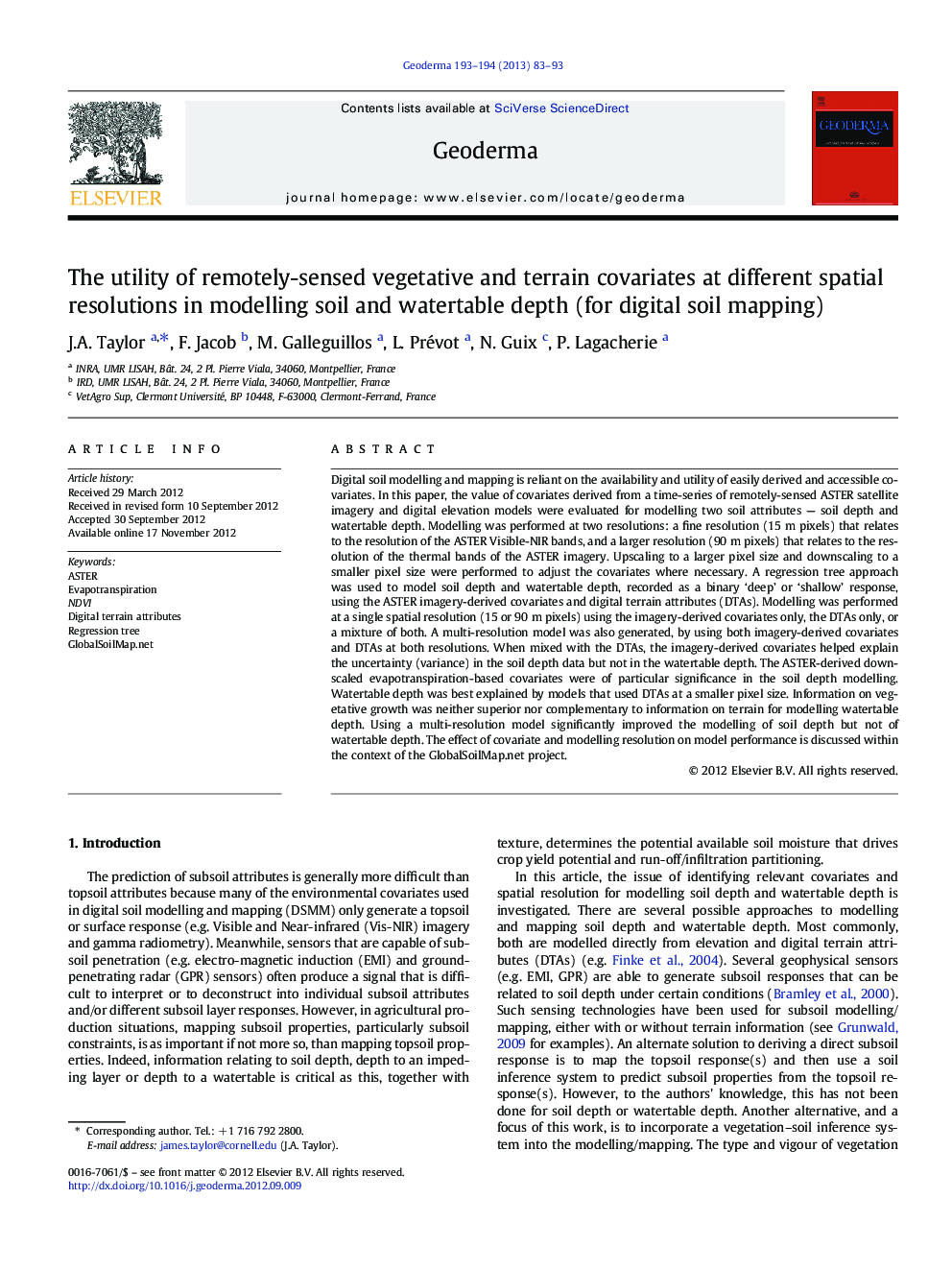| Article ID | Journal | Published Year | Pages | File Type |
|---|---|---|---|---|
| 4573670 | Geoderma | 2013 | 11 Pages |
Digital soil modelling and mapping is reliant on the availability and utility of easily derived and accessible covariates. In this paper, the value of covariates derived from a time-series of remotely-sensed ASTER satellite imagery and digital elevation models were evaluated for modelling two soil attributes — soil depth and watertable depth. Modelling was performed at two resolutions: a fine resolution (15 m pixels) that relates to the resolution of the ASTER Visible-NIR bands, and a larger resolution (90 m pixels) that relates to the resolution of the thermal bands of the ASTER imagery. Upscaling to a larger pixel size and downscaling to a smaller pixel size were performed to adjust the covariates where necessary. A regression tree approach was used to model soil depth and watertable depth, recorded as a binary ‘deep’ or ‘shallow’ response, using the ASTER imagery-derived covariates and digital terrain attributes (DTAs). Modelling was performed at a single spatial resolution (15 or 90 m pixels) using the imagery-derived covariates only, the DTAs only, or a mixture of both. A multi-resolution model was also generated, by using both imagery-derived covariates and DTAs at both resolutions. When mixed with the DTAs, the imagery-derived covariates helped explain the uncertainty (variance) in the soil depth data but not in the watertable depth. The ASTER-derived downscaled evapotranspiration-based covariates were of particular significance in the soil depth modelling. Watertable depth was best explained by models that used DTAs at a smaller pixel size. Information on vegetative growth was neither superior nor complementary to information on terrain for modelling watertable depth. Using a multi-resolution model significantly improved the modelling of soil depth but not of watertable depth. The effect of covariate and modelling resolution on model performance is discussed within the context of the GlobalSoilMap.net project.
► Soil and watertable depth was modelled with covariates from ASTER images and DEMs. ► Modelling was undertaken at two spatial resolutions using regression trees. ► Soil depth models were improved by using both imagery and DEM covariates. ► Soil depth models were best when multi-scale (15 and 90 m) covariates were used. ► Watertable depth was best modelled with attributes from a finer resolution DEM.
